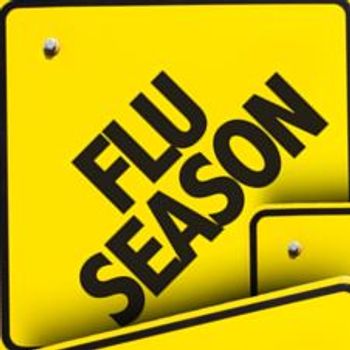
Lung Donation: New Protocol
SAN ANTONIO -- The shortage of lungs deemed suitable for transplantation could be eased with a combination of medical management of donor organs and less stringent acceptance criteria, researchers here asserted.
SAN ANTONIO, Sept. 15 -- The shortage of lungs deemed suitable for transplantation could be eased with a combination of medical management of donor organs and more liberal acceptance criteria, researchers here asserted.
After the Texas Organ Sharing Alliance put into place in 2001 a new protocol that include medical manipulation of potential donor organs and extended organ criteria, the number of transplanted lungs more than doubled, reported Luis F. Angel, M.D., of the University of Texas Health Science Center here, and colleagues.
Lungs from 53 donors that would have been rejected under the told protocol accounted for more than half of all transplants, and there were no significant differences in survival or clinical measures of graft function compared with patients who got lungs from "ideal" donors, the author wrote in the second September issue of the American Journal of Respiratory and Critical Care Medicine.
Four years after the San Antonio Lung Transplant (SALT) protocol was implemented, the rate of organs offered to transplant centers had increased from 21% to 57%, and the overall organ procurement rate went from 11.5% to 25.5%.
"A key strategy for increasing the number of usable donor lungs in our study was modifying donor criteria by reassessing oxygenation, chest radiography and bronchoscopic findings as absolute criteria after active donor management," said Dr. Angel.
The findings raise the question of whether overly-rigid donor criteria could be contributing to the shortage of donor organs, suggested Andrew C. Chang, M.D., of the University of Michigan in Ann Arbor, and James B. Orens, M.D., of Johns Hopkins, in an accompanying editorial.
"Although it is thought that the available supply is far less than the demand, this may not be so," they wrote. "We may simply not be utilizing enough of the available lungs."
The editorialists pointed out that some countries, such as Australia, claim use rates of 50% of potential donor lungs, with survival and functional outcomes comparable to those achieved in those in United States.
"It is likely that centers in high-use countries combine aggressive donor management strategies with acceptance of organs that previously had been considered too risky in other regions," they commented.
The SALT protocol emphasizes that every organ donor should be considered as a potential lung donor until ruled out by specific criteria.
The absolute criteria for lung donation included a ratio of oxygen partial pressure to fraction of inspired oxygen ( PaO2/FiO2 ) of 300 or greater, with no radiographic evidence of infiltrates, and no evidence of copious purulent secretions, or demonstration of aspiration on bronchoscopy.
Extended donor criteria included the presence of one or more of the following: age older than 55, cumulative smoking history of more than 20 pack-years, history of pulmonary disease, severe chest trauma, more than four days spent on mechanical ventilation, and positive results from Gram staining of tracheal or bronchoalveolar lavage fluids.
The protocol classified as ideal donors those who met all of the absolute criteria and had none of the extended criteria. Extended donors were those who met all of the absolute criteria, but had one or more of the extended criteria. Poor donors were those who did not meet all of the absolute criteria.
But the protocol also allowed for category shift if the donor management strategies used improved the quality of the donated organs.
If the donors had either an initial PaO2/FiO2 ratio
The strategy allowed 135 of 257 donors (53%) who were initially classified as poor to be moved up to the extended or ideal categories, and 53 of the 135 (39%) became lung donors. In contrast, only 10% of lung donors characterized as poor for the four years preceding the implementation of the SALT eventually became lung donors.
The authors found that the mean rate of lung procurement was significantly higher during the first four years when the SALT protocol was in place than during the four preceding years (25.5% versus 11.5%, respectively). This translated into an estimated risk ratio of 2.2 in favor of the SALT protocol.
A total of 121 patients received lung transplants during the protocol period, compared with 53 in the pre-protocol period (P
Newsletter
Enhance your clinical practice with the Patient Care newsletter, offering the latest evidence-based guidelines, diagnostic insights, and treatment strategies for primary care physicians.



























































































































































































































































































